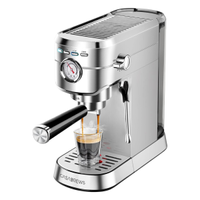Pressurized coffee baskets — how do they work and when should you use them?
A beginner's guide to pressurized coffee baskets
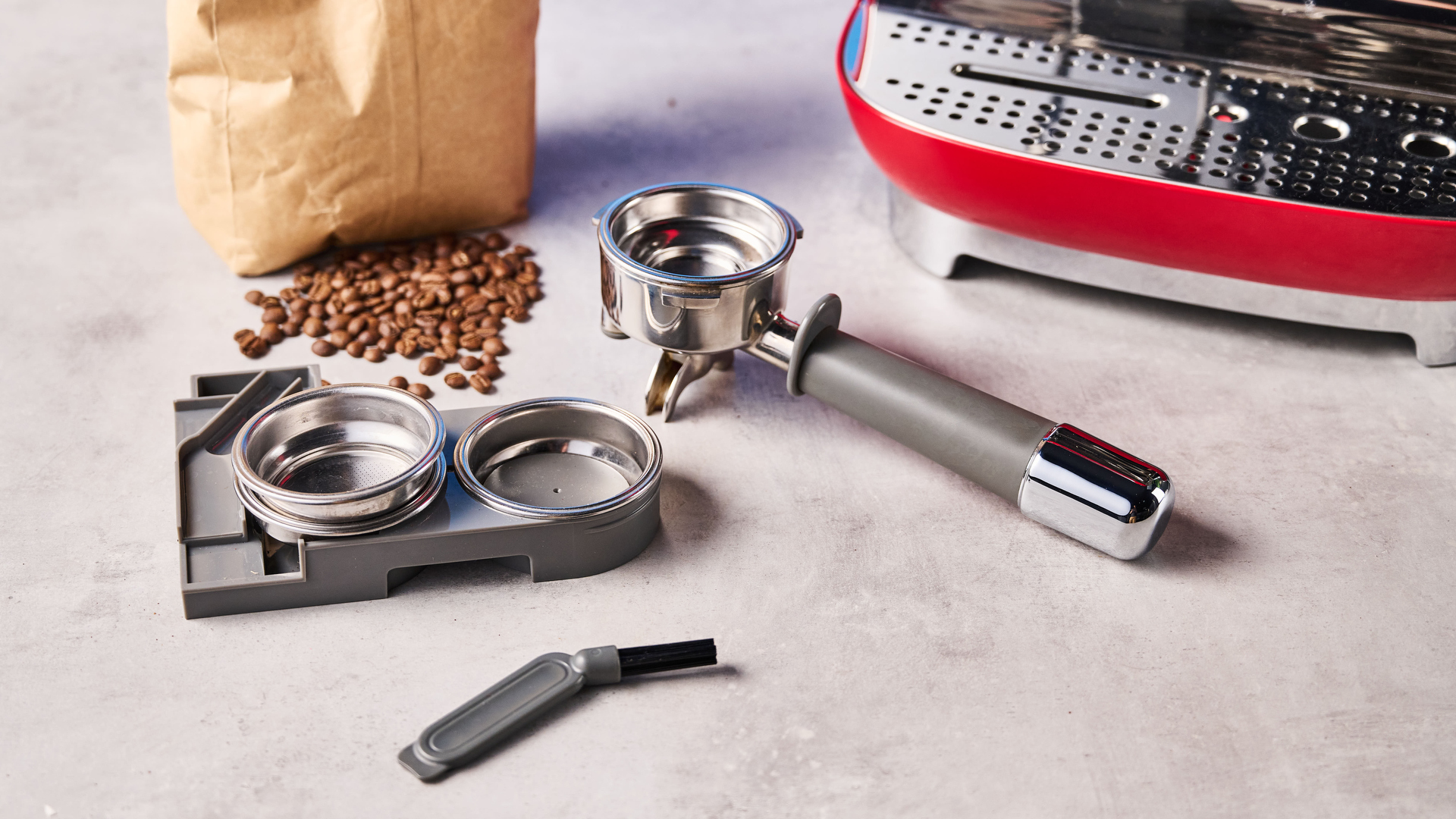
There’s nothing quite like a fresh cup of espresso to start (or end) your day. And while you can visit your neighborhood coffee shop for a shot of the good stuff, it’s much easier to brew it at home. But if you’re shopping for an espresso machine, you may encounter some unfamiliar phrases, like “pressurized baskets” and “non-pressurized baskets.” They can also be called double-walled and single-walled baskets. Understanding what these baskets are and how they differ can help you find the best coffee maker for your morning (or afternoon or evening) brew.
Pressurized filters restrict the flow of coffee to ensure that water doesn't flow through your coffee grounds too fast, even if they're not ground correctly or even pre-ground. In an non-pressurized basket, the machine relies on your coffee grounds alone to provide resistance to the pressure of the flow of water. The best way of thinking about it is that a pressurized filter is a bit of a cheat code to a better espresso, but for those who want the perfectly dialed-in espresso, they can get in the way of showing if your coffee really is perfectly brewed.
We spoke to Theodore Chan, founder of Coffee Roast, to learn more about pressurized baskets and how they work.
What are pressurized coffee baskets?

To make the perfect shot of espresso, your machine must maintain the proper flow through the coffee grounds to extract the flavor in a consistent manner. Many espresso machines come with both pressurized and non-pressurized baskets, or single and double-walled baskets, for this purpose.
“Pressurized baskets have built-in mechanisms, such as a double-wall design or a single exit hole, to create back pressure during extraction,” explains Chan. “[They] tend to be more forgiving for beginners, people in a rush, and those using pre-ground coffee or lower-quality grinders.” Essentially, they allow you to create the perfect shot even if you’re a newbie or are working with lower-quality beans.
Non-pressurized baskets use the coffee puck itself to regular water flow through multiple holes rather than just one. They’re harder to use for beginners and come with a higher margin of error. “While non-pressurized baskets can deliver superior flavor and complexity, dialing in a perfect shot takes time and practice,” explains Chan. “Minor errors or imbalances can lead to uneven extractions or channeling, where water flows through weak puck points, disrupting the flavor balance.”
How do pressurized baskets work?
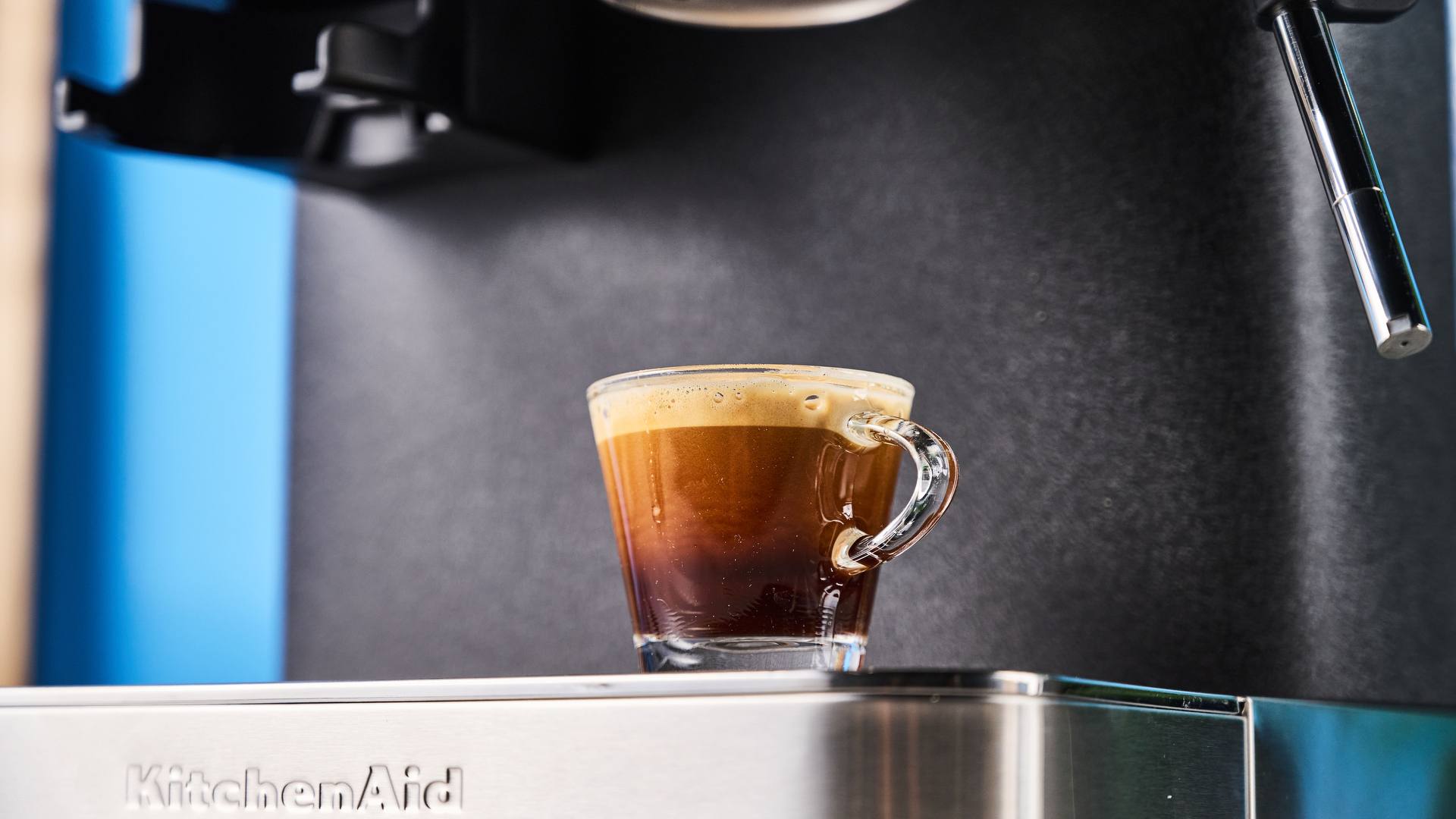
So how, exactly, do pressurized baskets work, and how does that impact your finished brew?
Sign up to get the BEST of Tom's Guide direct to your inbox.
Get instant access to breaking news, the hottest reviews, great deals and helpful tips.
“Pressurized baskets restrict water flow through a smaller opening or secondary wall, creating artificial resistance,” explains Chan. “This ensures something near proper pressure even if the quality of the grind, tamp, or coffee isn't perfect.”
Using a pressurized basket also prevents channeling. “Channeling occurs when water finds paths of least resistance through the puck, resulting in uneven extraction,” says Chan. “For this reason, non-pressurized baskets are better suited for moments when there's time to focus on every detail.”
When should I use a pressurized basket?
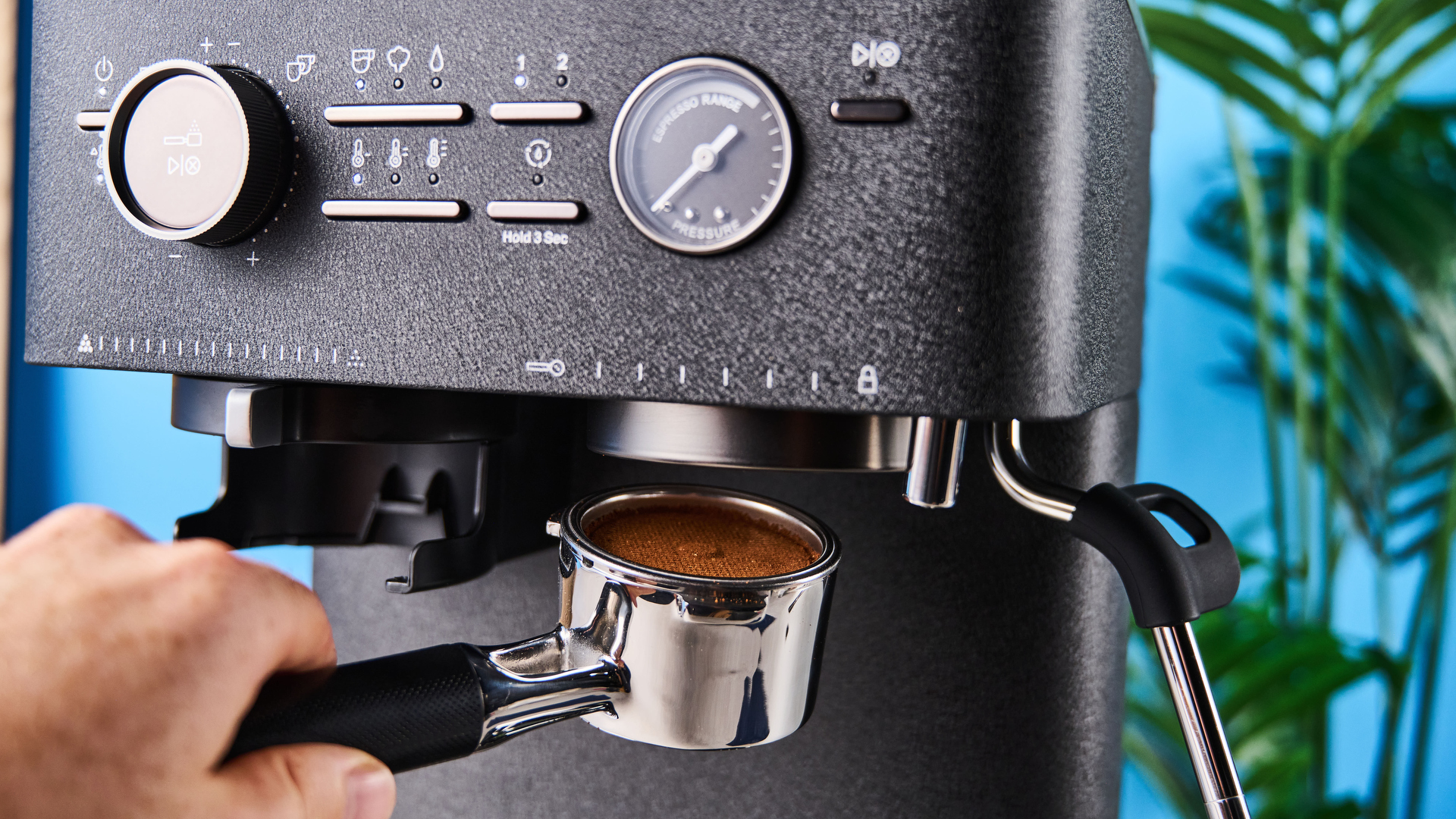
As previously mentioned, many modern espresso machines have both a pressurized and a non-pressurized basket. So, how do you know which one to use?
If you’re just starting out your home-brewing journey or are short on time, a pressurized basket is the better option. “Not every espresso you make is going to be a dialed-in, carefully curated puck,” says Chan. “It's handy to have a pressurized around, especially a double-spouted one.”
Double-walled or pressurized baskets are also great for coffee makers that don't come with a built-in grinder. If you plan on using pre-ground coffee, this can often lack the aromatic quality that you'll get with fresh-ground. It also off-gasses in the grinding process, meaning the carbon that causes your coffee to get a thick and frothy layer of crema when it's brewed is less present. A double-walled basket can create that same effect by creating pressure and forcing your coffee to produce a creamy top layer.
However, if you know what you’re doing and have the time to dedicate to creating the perfect shot of espresso, you’ll want to use a non-pressurized basket. As Chan explains, “Coffee is about enjoyment and personal preference, so you're giving yourself the option of quick and easy, versus dialed-in.” When we test espresso machines that come with both single and double-walled baskets, we tend to use the single-walled basket as a true indication of how well the coffee extracted. So while having a pressurized basket is a good failsafe, it's not the real deal.
Since many modern espresso machines come with both types of baskets, you can easily pick and choose the right one depending on your experience level and the amount of time you have to make the perfect shot.
The Casabrews is our top pick of the best budget espresso machine. The pressure gauge display means you can experiment with grind and tamp to get the best espresso texture, and it comes with both pressurized and non-pressurized baskets.
How to tell if your basket is pressurized
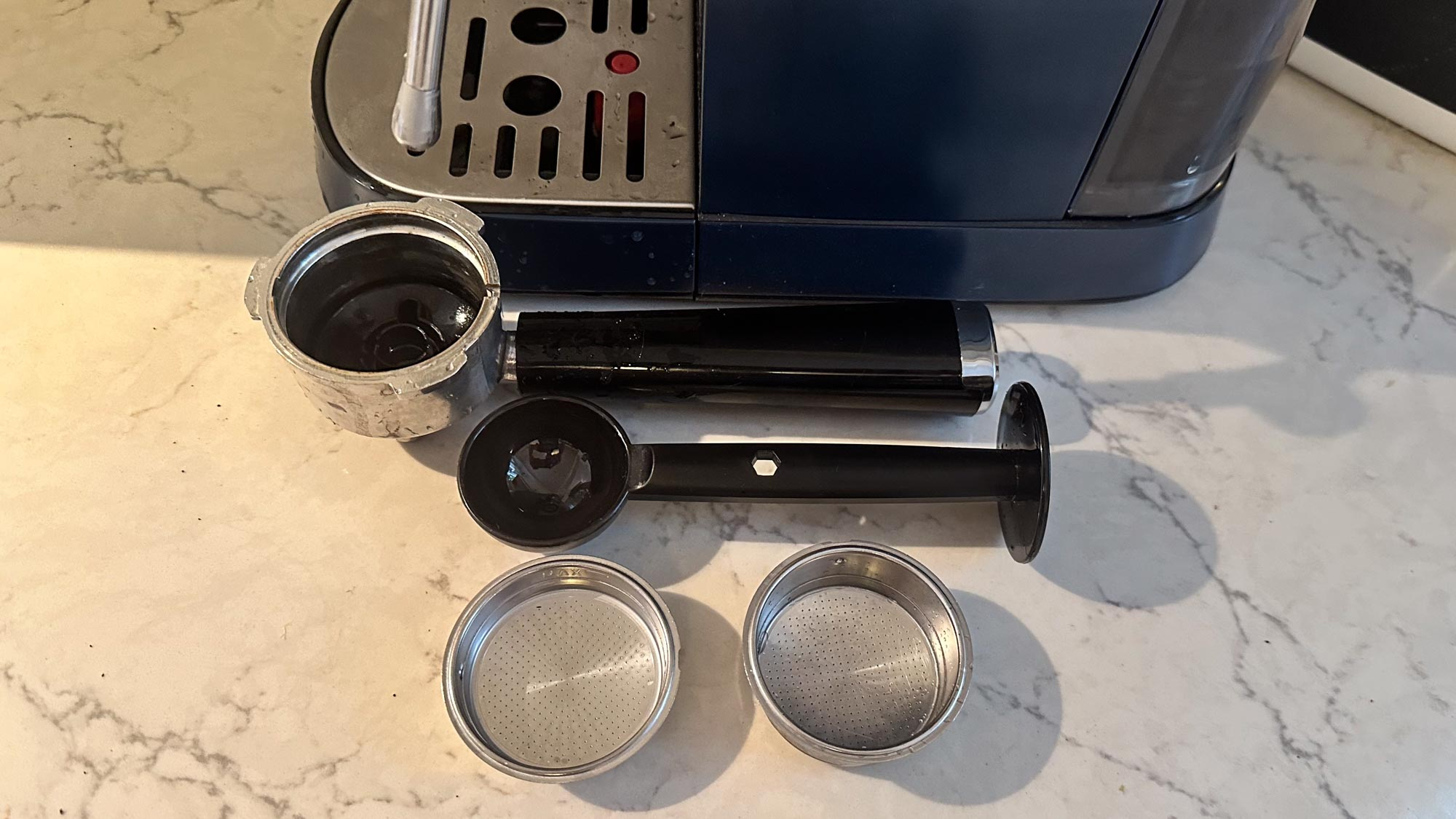
Knowing how each type of basket works is one thing, but how can you tell the difference between the two if you’re a newbie to the inner workings of an espresso machine?
“Pressurized baskets typically have a single hole or double spout or a honeycomb with a small number of holes at the bottom, while non-pressurized baskets have a mesh-looking bottom,” explains Chan. Pressurized baskets also have a false bottom; if you look at one from the top, you’ll see a grid of holes, but from the bottom, you’ll only see one.
More from Tom's Guide

Catherine Hiles has over a decade of experience writing and editing on various topics, including home improvement, personal finance, home finances, pet ownership, and parenting. Her work has been featured on BobVila.com, TIME Stamped, The Penny Hoarder, and more. In her spare time, Catherine enjoys running, reading, spending time with her kids and dogs, and tackling projects around the house.
-
pourover Hi, I'm Theodore Chan from CoffeeRoast. I'm the expert mentioned in this article. I thought Catherine did a great job with the article. I got set back up in the forum here, and I'd be happy to answer any questions anyone has about portafilters, espresso machines, and coffee gear!Reply
